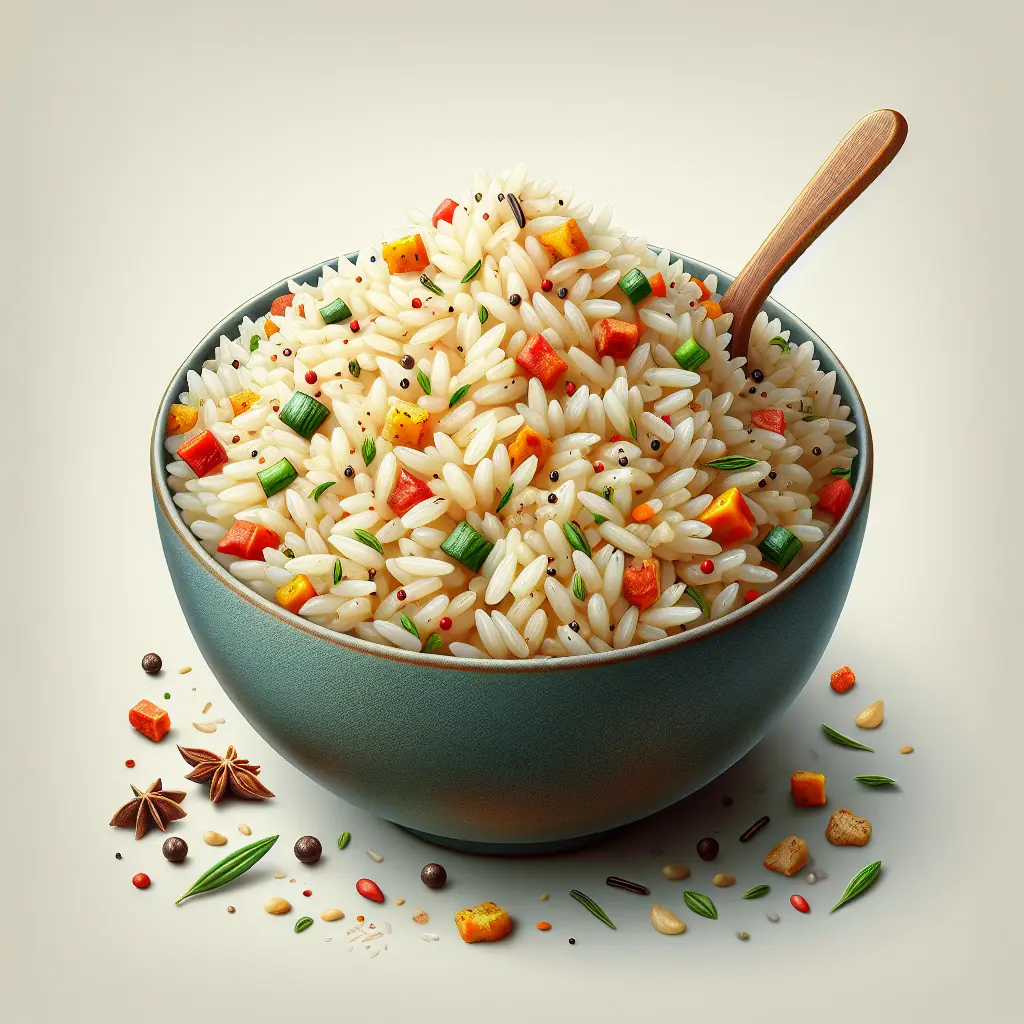Rice Pilaf: A Culinary Delight
Rice pilaf, an aromatic and flavorful dish, has captivated palates for centuries. It's a versatile side dish that complements a wide range of main courses, from succulent grilled meats to hearty stews. Its distinct texture, achieved by toasting the rice before simmering it in flavorful broth, adds depth and character to any meal.
Nutritional Value of Rice Pilaf
A single cup of rice pilaf provides a substantial amount of essential nutrients:
- Calories: 261
- Protein: 4.1 grams
- Fat: 8.1 grams
- Carbohydrates: 42 grams
- Fiber: 0.8 grams
- Sugar: 0.4 grams
Rice pilaf is a good source of complex carbohydrates, which provide sustained energy throughout the day. It also contains a moderate amount of protein, essential for building and repairing body tissues. Additionally, it offers dietary fiber, important for maintaining a healthy digestive system.
Preparing Rice Pilaf: A Simple Guide
Making rice pilaf is a straightforward process that can be mastered by home cooks of all levels. Here's a step-by-step guide:
- Choose the right rice: Long-grain rice, such as basmati or jasmine, is best for pilaf as it prevents the grains from becoming mushy.
- Toast the rice: In a large saucepan or Dutch oven, toast the rice over medium heat until it turns golden brown. This step enhances the flavor and aroma of the dish.
- Add liquid: Pour in chicken or vegetable broth, water, or a combination of both. The liquid should cover the rice by about an inch.
- Season the broth: Add salt, pepper, and any other desired spices to the broth. Common seasonings include cumin, turmeric, and saffron.
- Bring to a boil: Bring the liquid to a boil, then reduce heat to low, cover, and simmer for 18-20 minutes, or until the liquid is absorbed and the rice is tender.
- Fluff and serve: Once cooked, remove the pilaf from heat and fluff it with a fork. Serve immediately as a side dish or use it as a base for other dishes, such as stuffed grape leaves or biryani.
Creative Variations of Rice Pilaf
The versatility of rice pilaf allows for endless variations to suit different tastes and preferences. Here are some exciting ideas:
- Vegetable Pilaf: Add chopped vegetables such as carrots, celery, onions, and peppers to the rice mixture for a colorful and nutritious dish.
- Meat Pilaf: Include cooked ground beef, lamb, or chicken to the pilaf for a hearty and protein-rich meal.
- Fruity Pilaf: Add dried fruits like cranberries, raisins, or apricots for a touch of sweetness and a festive touch.
- Herbed Pilaf: Incorporate fresh herbs such as parsley, cilantro, or rosemary into the pilaf for an aromatic and flavorful twist.
- Spiced Pilaf: Experiment with different spices to create unique flavor profiles. Try adding cinnamon, cloves, or star anise to the broth for a warm and exotic taste.
Conclusion
Rice pilaf is a culinary masterpiece that offers a perfect balance of taste, texture, and nutritional value. Its versatility makes it a staple in many cuisines, from Middle Eastern to Mediterranean. Whether you savor it as a simple side dish or use it as a base for more elaborate creations, rice pilaf is sure to impress your taste buds. So next time you're planning a meal, consider adding this flavorful and wholesome dish to your menu.
How many calories are in Rice Pilaf?
Each 1 cup of Rice Pilaf contains 261 calories.
Rice Pilaf Nutritional Information
| Nutrient | Amount per 1 cup (164g) |
|---|---|
| Calories | 261 Calories |
| Protein | 4.1g |
| Fat | 8.1g |
| Saturated Fat | 2.9g |
| Cholesterol | 0.0094mg |
| Carbohydrates | 42g |
| Dietary Fiber | 0.8g |
| Sugar | 0.4g |
| Sodium | 0.574mg |
| Potassium | 0.066mg |
| Calcium | 0.018mg |
| Iron | 0.0003mg |
